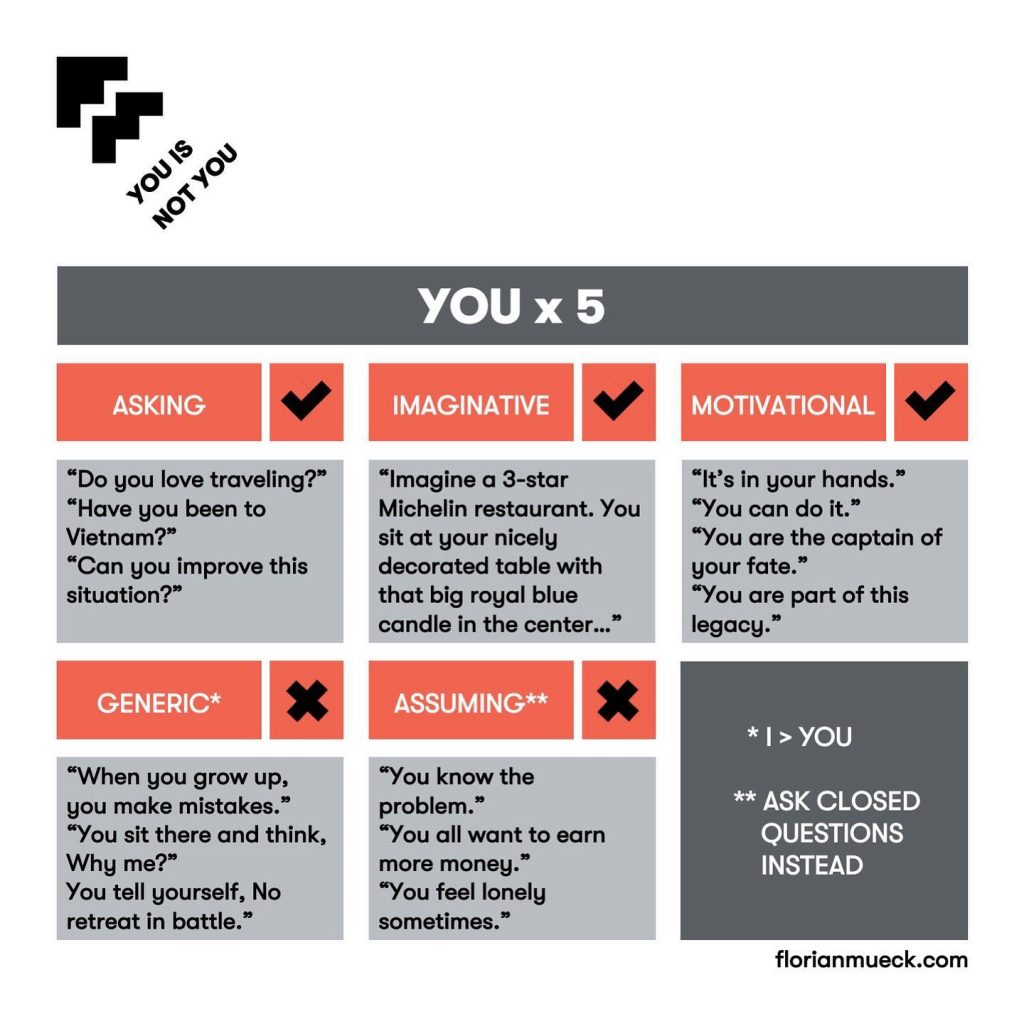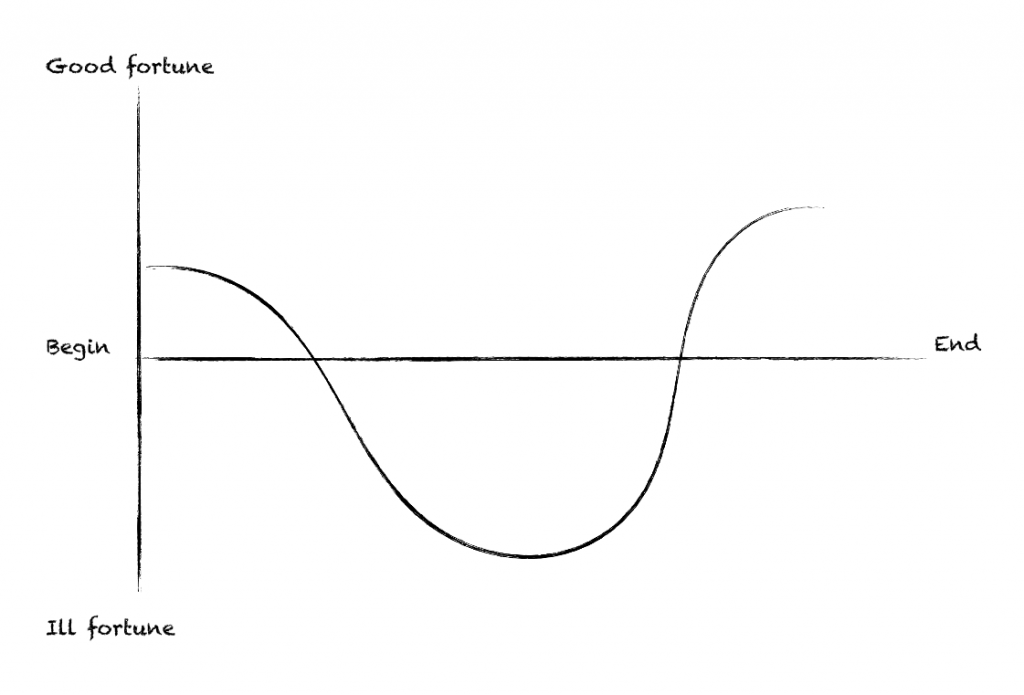Message on inner value from Florian Mueck
A public speaker’s checklist from John Zimmer
A downloadable one-page PDF logistial checklist for your next presentation:
Before the keynote: message from Peter Zinn
PowerPoint Math: The 1-6-6 Rule
Today I want to discuss the 1-6-6 Rule. Quite simply, this “Rule” says that each PowerPoint slide should have one main idea, a maximum of six bullet points, and a maximum of six words per bullet point. Two caveats:
- I have also seen this rule called the 1-5-5 Rule and the 1-7-7 Rule, with necessary changes to the numbers of bullet points and words per bullet point. I have chosen the middle ground.
- The “Rule” is not a rule at all. It is nonsense.
Why is it nonsense? Let’s see the 1-6-6 Rule in practice.

Now, you might be thinking, “I’ve seen worse.” And, at first blush, this slide doesn’t look too bad. The sentences are short and straightforward; the font is large and easy to read. Here’s the problem: It’s only one slide.
Imagine a modest presentation of 16 slides that rigorously follows the 1-6-6 Rule. Looking at the entire presentation in Slide Sorter View will give you some sense of just how bad things could get.

Bombarding your audience with this much text in a presentation is a sure-fire way to stimulate boredom, apathy or revolution. Dont’t do it.
I am not opposed to bullet points of text in a presentation. In fact, when used properly, they can be effective. But they should be used sparingly.
Minimize text and avoid long runs of text-only slides. Break things up. Throw in some pictures for visual variety; add a video clip; use a prop; occasionally turn the screen black and – heaven forbid – just speak to the audience.
There are many ways in which to create an engaging presentation so that, when you do show important text, your audience will actually want to read it.
As for the 1-6-6 Rule, please find a trash can and bin it.
Post courtesy of John Zimmer @ mannerofspeaking.org [link to source]
Lessons form Senegal
Teranga. It is the word that best represents the values at the heart of society in Senegal. During my trip to Dakar, I experienced it on a daily basis.
There is no direct translation of teranga in English. “Hospitality” comes close but it is an incomplete translation. The best way to understand teranga is to have it explained by someone from Senegal.

Pierre Thiam
Pierre Thiam is a famous Senegalese chef from Dakar. I first learned of Thiam in an episode of Anthony Bourdain: Parts Unknown. (Definitely worth watching.)
In an interview about Senegalese cuisine, Thiam explains teranga this way:
Teranga is the word that symbolizes Senegal the best, I think. Teranga is a Wolof word that would translate to hospitality, but it’s not the right way to translate teranga.
Teranga is much more than just hospitality. It’s a value. If there’s a set of values in Senegal, teranga would be the most important one. It’s the way you treat the guest. It’s the way you treat the other, the one who is not you. That person becomes the one to whom you have to offer teranga. You have to treat him with so much respect. You have to offer him what you have. You have to invite him to sit around your bowl.
There’s always room for the other around your bowl. Why? Because we believe that the other is bringing blessings. When you share your bowl, your bowl will always be plentiful. This is the deep-rooted Senegalese belief; we believe that there’s always more. You will never lack by sharing. Actually, when you share, you guarantee yourself that tomorrow if there’s more, there’s going to be more food in your bowl. This is a country that values the wealth of a person not by how much he has, but by how much he shares, by how much he gives.
That’s what I would say to summarize what teranga means. There’s not one word that describes it, but teranga is what Senegal is. It’s something that’s really unique to my country. I’m not saying that because I’m Senegalese. It’s just this value has been instilled in us that we have to treat the other as the most important person in the world.
It’s a beautiful word and a beautiful idea. The world could certainly use more teranga.
Speakers can also learn a lesson from Pierre Tham and apply the principle of teranga in their speeches and presentations.
- The audience is your guest.
I find the whole idea behind teranga inspirational and aspirational, and I have been thinking about it a lot.
In his show about Senegal, Anthony Bourdain said:
Some places surprise you. Even if you’ve been traveling nearly non-stop for 15 years like me, there are places that snap you out of your comfortable world view, take your assumptions and your prejudices, and turn them upside down. They lead you to believe that maybe, there is hope in the world. Senegal is one of those places.
I understand what he means.
Photo courtesy of www.pierrethiam.com
Post courtesy of John Zimmer @ mannerofspeaking.org [link to source]
Become a pro trainer
You is not you
When we talk about content in public speaking, one of my favorite topics is the word “you”. I love to analyze and categorize the different forms of use. Here is yet another approach to tame this untamable three-letter word.

#publicspeaking #charisma #content #empathy #audienceinteraction #questions #genericyou #assumptions For more infographics: #fminsights
Lesson from a farmer’s field
Man in the hole
In 1947 Kurt Vonnegut, who would later become a well known writer, wrote his master thesis for anthropology. It was rejected. Too simple. Looked like he had had too much fun creating it.
15 years later Vonnegut eventually did receive his masters, and in 2014 computer aided research on an enormous part of English stories and literature showed his thesis to be absolutely true.
The thesis was about story arcs. Almost every story can be categorized into one of six simple graphs, plotting the character’s happiness over time. One of the simplest story arcs is the ‘man in hole’. Somebody gets into trouble, and gets out of it again.
It starts out with the hero of the story on known territory, happy, no problems. And then he loses control, has a crisis, and reaches rock bottom. Through some outside help he climbs out the hole, and ends a bit happier than where he started. With a lesson learned.
This format is great for mini stories to spice up your presentation. Many sitcoms follow this simple pattern as well.
The man in hole, together with two other popular story arcs, is explained in a fun way by Vonnegut himself in this old video:

Shoutout to Kai-Jürgen Lietz! He has written a book on the concept (in German). [link to book seller]
Post courtesy of Peter Zinn @ spekfreak.eu [link to source]



